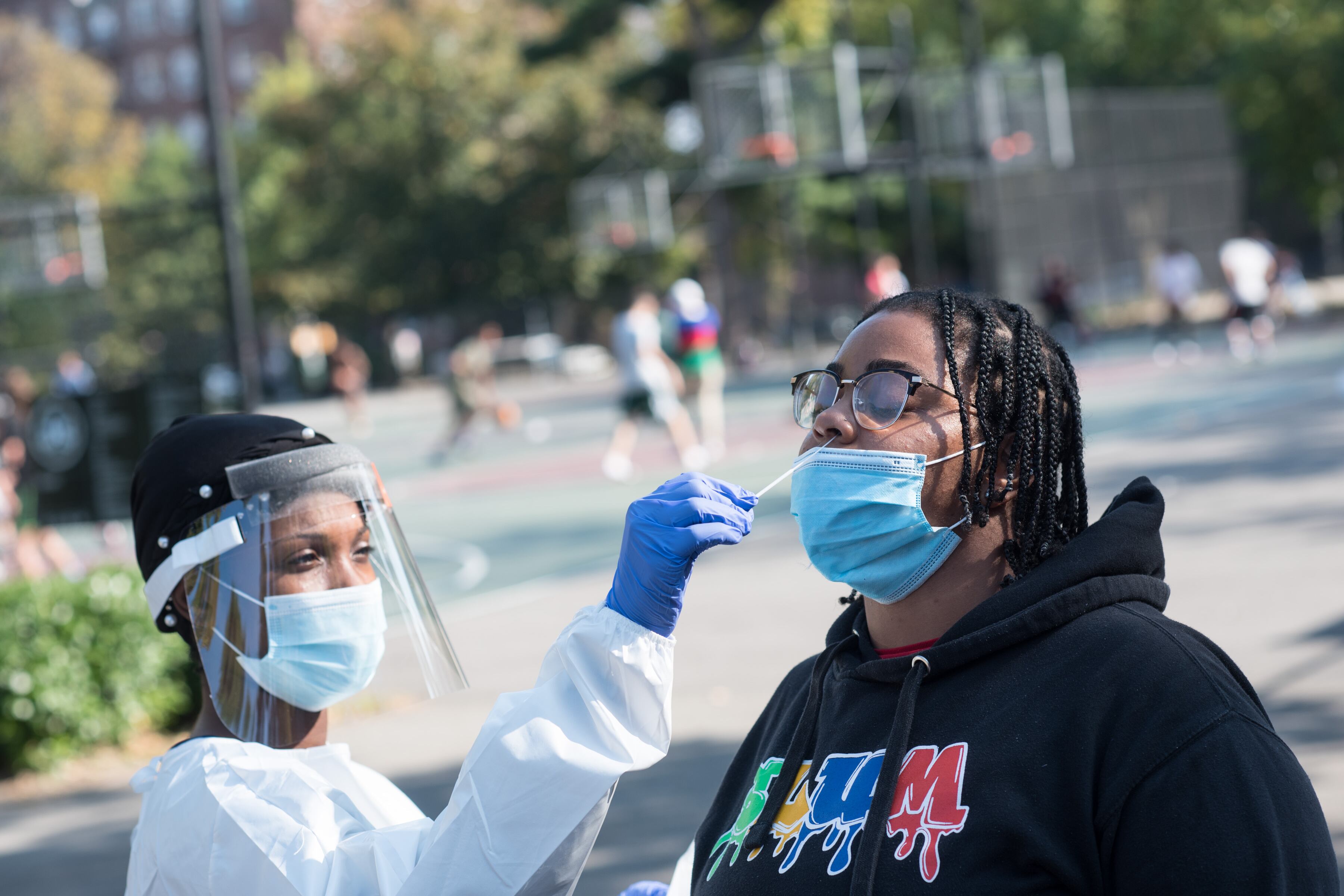Months into reopening, the majority of Chicago schools have fewer than 10 percent of students signed up for the district’s school-based COVID testing. Most of these campuses are on the South and West Sides that have been among the hardest hit by the ongoing pandemic.
Some schools in Little Village, North Lawndale, and Austin had fewer than five students enrolled for the testing program. Districtwide, 48 schools had less than five students enrolled, records show.
Chicago Public Schools’ COVID testing program has had a rocky start with multiple failed deadlines, staffing problems with the testing vendor, and a complicated opt-in process.
As district officials weigh pulling back on quarantine measures and relying more on testing, the opt-in data shows how far the district still has to go to hit the 10% threshold at every campus. Public health officials have said that threshold is key to effectively screen for the virus.
The emergence of the omicron variant has also added new urgency to the fight against COVID.
Chalkbeat obtained the data, which reflects sign-ups through Nov. 1, through a public records request.
Despite efforts in recent weeks to ramp up testing capacity, district officials have struggled to get students opted-in for COVID testing at schools on the South and West Sides, according to the data.
About 203 schools, or 40 percent of district-run schools, have hit the 10% threshold as of Nov. 1, compared with 301 schools with less than 10%. About 188 schools have fewer than 5% of students opted in for the testing program, records show.
Only about 9% of the district’s student body, or about 31,100 students, has enrolled in the testing program across Chicago Public Schools as of Nov. 1, according to public records.
Some parents previously told Chalkbeat that the opt-in forms were convoluted and said the district had not communicated clearly about the program.
The district said in a statement it was committed to “providing a safe and healthy learning environment” throughout Chicago Public Schools.
“CPS has made the case for why testing is useful and made obtaining it simple, free, and widely available across the District,” the district said.
Asked about the low rate of signups at some schools, the district said it had promoted testing on its website and through webinars and meetings with school administrators, staff, community organizations, and “targeted informational campaigns during report card pick ups.”
“The options and opportunities to test in school are many,” the district said. “CPS will continue to provide educational and informational resources for parents and families.”
In addition to testing, the district said it was working to increase vaccination among students, staff, and families to best protect school communities against the virus.
Dr. Allison Arwady, the city’s health commissioner, has said the goal is to test 10% of a school’s unvaccinated population to screen for the virus.
Englewood, which reported 3,090 COVID cases and 105 deaths since the start of the pandemic, had 15 schools with fewer than 10% of students enrolled in district testing, according to city data. In Austin, 12 schools had less than 10% of their student body enrolled. The neighborhood, which includes the 60644, 60639, 60651, and 606707 ZIP codes, recorded 33,327 cases and 632 deaths, according to city data.
Garfield Park, Little Village, and Belmont Cragin each had 12 schools with 10% of students signed up. Humboldt Park and New City each had 10 schools in the neighborhoods that failed to reach the 10% threshold.
The data shows opt-in rates vary widely across the district.
Woodlawn Community Elementary School near the University of Chicago had the highest opt-in rates with about 96% of its student population enrolled, followed by Gage Park High School on the city’s Southwest Side with 61% and Thomas A. Edison Regional Gifted Center on the North Side with 58%.
CEO Pedro Martinez earlier this month said the district planned to roll out a test-to-stay program Monday that will allow unvaccinated students exposed to COVID-19 the option of frequent testing to stay on campus. The pilot aims to curb the number of students being quarantined at a given time.
In an effort to drive up opt-in rates, district officials plan to call parents to enroll in testing, Martinez said.
During November’s school board meeting, the CEO said the district had worked to ramp up testing. Currently, the district is conducting about 8,000 COVID tests per day, Martinez said.
The district conducted 26,469 COVID tests between Nov. 14 and Nov. 20, compared to 14,921 tests between Sept. 26 and Oct. 2.
In the months since Chicago schools reopened, the district’s testing program and low opt-in rates have come under fire by the teachers union leaders and some parents, who have questioned the program’s effectiveness. Union leaders and some parents have called for an opt-out approach.
The district opt-in rates still trail behind other cities, including New York City, where at least 35% of eligible students have opted in for testing. About 50% of students have submitted consent forms for school testing in Detroit. In New Jersey, Newark Public Schools struggled to start its testing last month, but still had about 24% of students signed up for its program.
In Los Angeles, the nation’s second largest school district, all students and staff members are mandated to test weekly to go to school.
Chicago Public Schools officials previously told Chalkbeat they need parental consent for COVID testing and there are legal reasons it requires parents to opt in for testing and not the other way around.
“No one should be tested for COVID-19 against their wishes or without explicit, written informed consent,” a district spokesperson said in a Monday evening statement.







